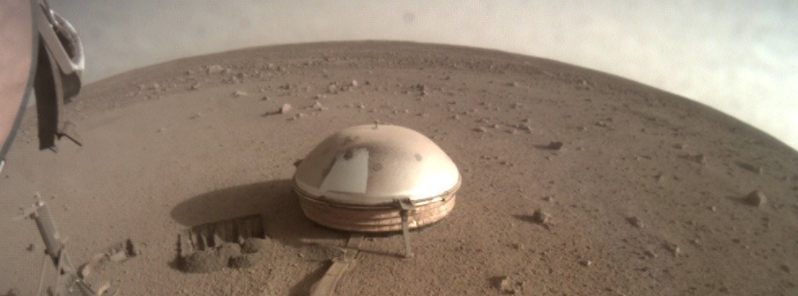NASA’s InSight lander detects two strong quakes on Mars

The InSight lander has registered two strong, clear quakes with magnitudes 3.3 and 3.1 in Cerberus Fossae on Mars– the same location where two other powerful tremors with magnitudes 3.6 and 3.5 were detected earlier in the mission. The mission has recorded more than 500 tremors to date, further supporting the idea that the area on the red planet is seismically active.
"Over the course of the mission, we’ve seen two different types of marsquakes: one that is more ‘Moon-like’ and the other, more ‘Earth-like," said Taichi Kawamura of France’s Institut de Physique du Globe de Paris, which helped give InSight's seismometer and distributes its data, along with ETH Zurich.
"Interestingly, all four of these larger quakes, which come from Cerberus Fossae, are ‘Earth-like," Kawamura continued. The lander detected the recent quakes on March 7 and 18, respectively.
The previous tremors, on the other hand, occurred almost a full Martian year or two Earth years ago. The mission noted a common feature between the current quakes and the previous top seismic events– all of them happened in the Martian northern summer.
Scientists had predicted that when winds would become calmer in the Martian northern summer, it would be the best time to spot quakes as the wind causes enough vibration to obscure some tremors.
In the last several weeks, listening for the heartbeat of Mars has revealed two strong, clear quakes from a region where I've felt them before: Cerberus Fossae. These two were magnitude 3.3 and 3.1. So far, I’ve recorded more than 500 marsquakes.
Read: https://t.co/WKGCVQ1Ro9 pic.twitter.com/K0FC7r3ATz
— NASA InSight (@NASAInSight) April 1, 2021
I’m getting ready for one of my next activities: burying the tether that runs out to my seismometer. I’ve done some test scrapes, and soon I’ll start scooping material to begin covering it. pic.twitter.com/ZDJ9GrRup8
— NASA InSight (@NASAInSight) March 4, 2021
"It’s wonderful to once again observe marsquakes after a long period of recording wind noise," said seismologist John Clinton, who leads InSight’s Marsquake Service at ETH Zurich. "One Martian year on, we are now much faster at characterizing seismic activity on the red planet."
More than 500 quakes have been detected on Mars since InSight touched down in November 2018. The four quakes have been the best records for probing the interior of the planet because of their clear signals.
"Studying marsquakes is one way the InSight science team seeks to develop a better understanding of Mars’ mantle and core. The planet doesn’t have tectonic plates like Earth, but it does have volcanically active regions that can cause rumbles," said NASA.
Featured image credit: NASA InSight

Commenting rules and guidelines
We value the thoughts and opinions of our readers and welcome healthy discussions on our website. In order to maintain a respectful and positive community, we ask that all commenters follow these rules.